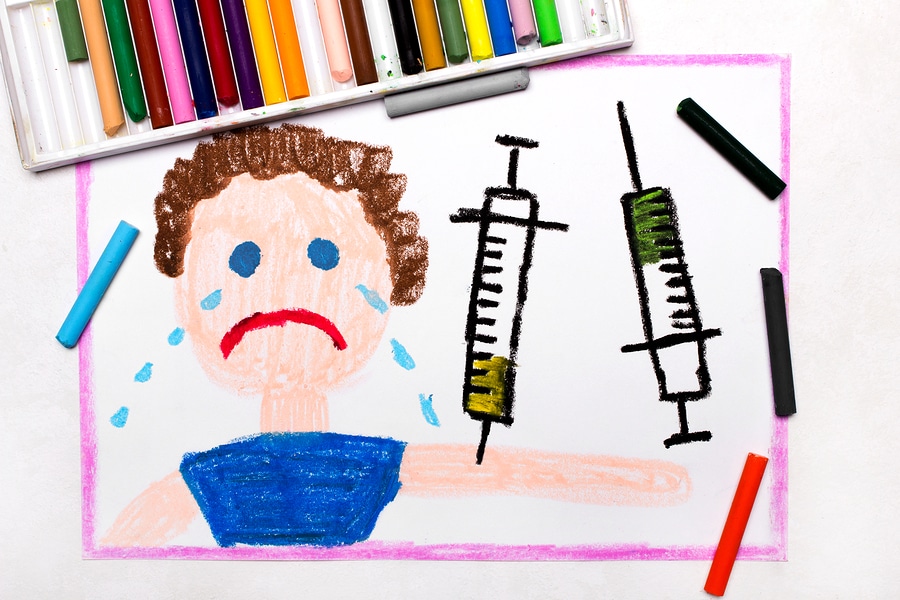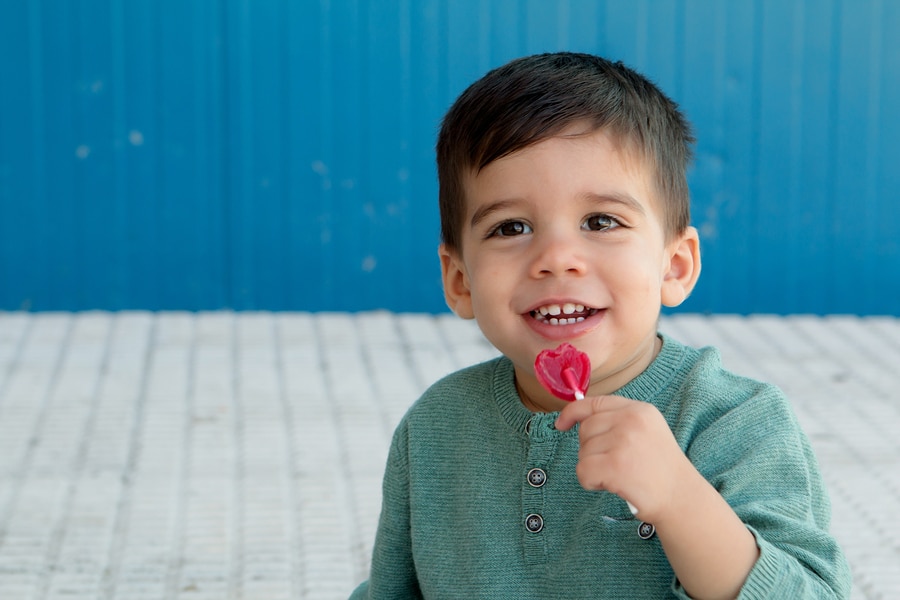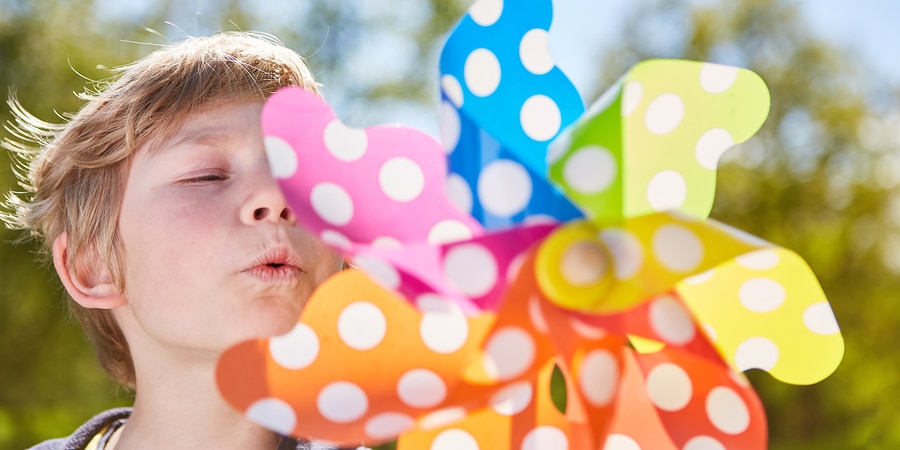Whether your baby is due for vaccinations or your older child is having the flu shot, learning some strategies to help them cope is so helpful. Getting a needle can be a really scary time for your little one. I recently attended a needle coping workshop at the Children’s Hospital and learned some amazing strategies that I wanted to share with you.

Distraction
If the brain is thinking about something else, it will not register some of the pain felt. According to a pain study published in Pediatrics (2007), the journal of the American Academy of Pediatrics, it states that “areas of the brain known to process pain stimuli have been shown to be less active during distraction tasks.” The study also showed that “the more children are engaged in distraction, regardless of the type of distraction stimuli, the lower the pain.”
So….distraction is KEY!!! Whatever that looks like for your child. For small babies, that could be a noise tube, rattle, or their favorite noisy toy! For young children that could be playing a game or watching Paw Patrol on the iPad. Bring your headphones to help them tune other noises out.
This is an amazing tool called Buzzy which helps block the pain felt during a needle procedure. It uses a combination of cold and vibration to replace pain with temperature and movement. How does is decrease their pain?? “When nerves receive non-painful signals such as vibration or cold, the brain closes the gate on pain signals.” It also helps to make one sensation (cold) intense so the brain turns the volume down on sensations in the body, thus decreasing their pain.
We had the opportunity to use it during my daughter multiple bloodwork pokes recently and it has helped her so much I am considering purchasing one!! Click here to check out more about buzzy!!

Lollipop pops
If you child is old enough- sucking on a lollipop has been proven to decrease a child’s pain during a painful procedure. So instead of giving a lollipop after the needle brings it out before the needle starts!! If you have a baby or toddler that uses a soother, make sure to bring a few and use them before and during the procedure. Breast milk has also been proven to be as effective as a pain-relieving strategy. If your baby is having a needle procedure at a hospital, they may place a small amount of oral sucrose on the infant’s tongue to reduce procedural pain prior to and during the procedure.
Numbing Cream
There are few creams that you can purchase over the counter at a pharmacy which you can apply to help numb the skin where the needle will be inserted. These numbing creams should be applied 30-45 mins prior to your child’s bloodwork or immunization. It will numb the skin and decrease the pain they feel during the needle poke. If your child is having bloodwork done, the numbing cream would be applied to the inside of their elbow, where the elbow bends. Apply a small amount and then apply a clear bandaid or clear adhesive. This is being removed by the health professional that will be administering the needle. If your child is having an immunization, it will depend on the age of the child and the location of the insertion. Older children usually have immunizations in the muscle of the upper arm and babies in their thighs. Best to discuss this with your public health nurse or doctor prior to your child’s next immunization. Make sure to check with your pharmacist to ensure that your child is old enough to apply these creams. Examples of numbing cream are Emla, Ametop, Maxilene or Lidocaine.
Cuddle positioning
Cuddle your child and face their head into towards you and not looking at the needle. You may have to help hold your child’s arm or leg during the procedure. And once it is done give them lots of cuddles and tell them they did such an amazing job!!

BREATHING
Dig out your pinwheel and take it with you!!! Get your little one to take a big breath in then blow out – getting them to try and spin the pinwheel. Pretend it is there birthday cake and get them to practice blowing out their birthday candle. This breathing strategy helps kids practice deep breathing which will decrease pain and help with feelings of anxiety and nervousness.
MAKE A PLAN
Finding strategies that help your child cope is KEY!!! For older children, you can get them involved in making a care plan for what they find helps them. Include which distraction they use, if they like to use cream, look away, or cuddle their favorite teddy. Being prepared and having a plan makes the experience so much smoother and easier for them. For your little ones, lots of distractions, cuddles, feeding or soother will help comfort them, so plan ahead and pack all the things you will need.
After it is over lots of positive reinforcement is proven to help solidify a more positive memory. So find something they did and praise that even if they screamed the entire time- find the win and make a big deal about it!! ❤️
As always if you have any questions, reach out to a local mama coach near you, we’re happy to help!

